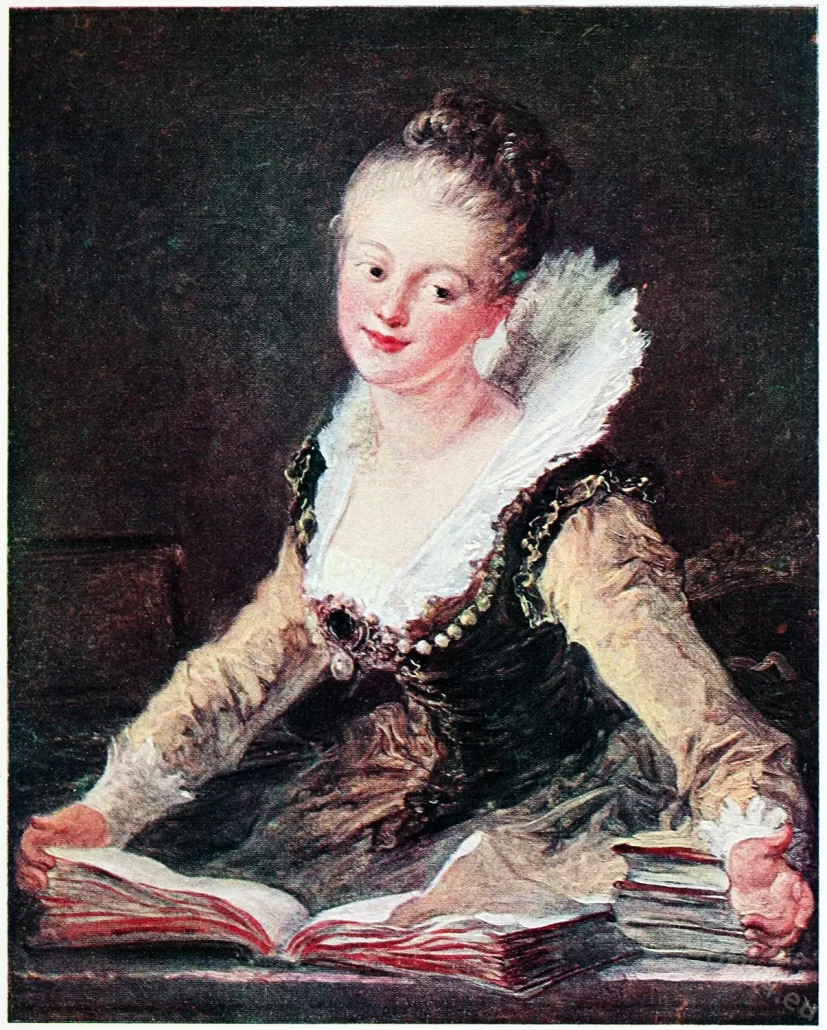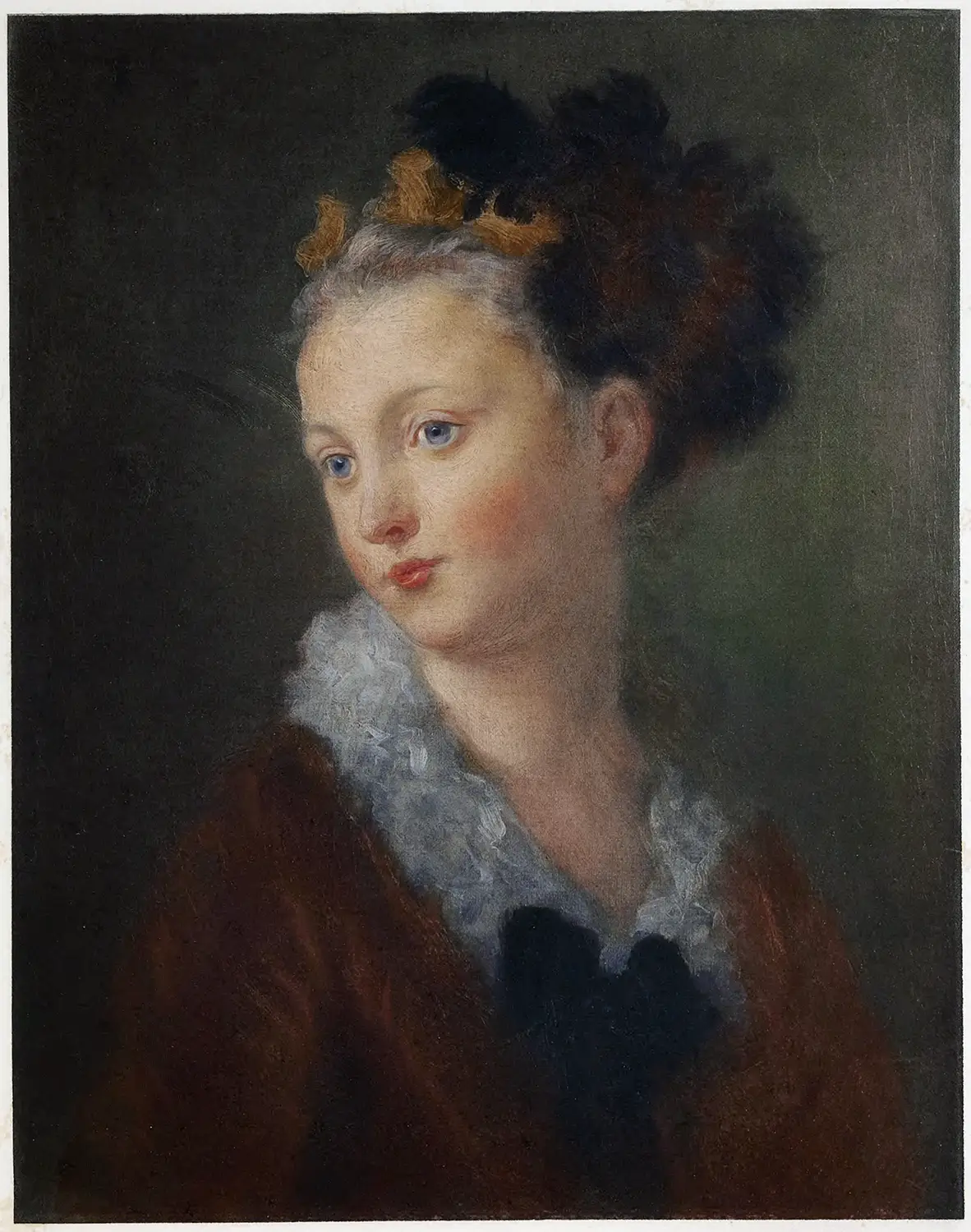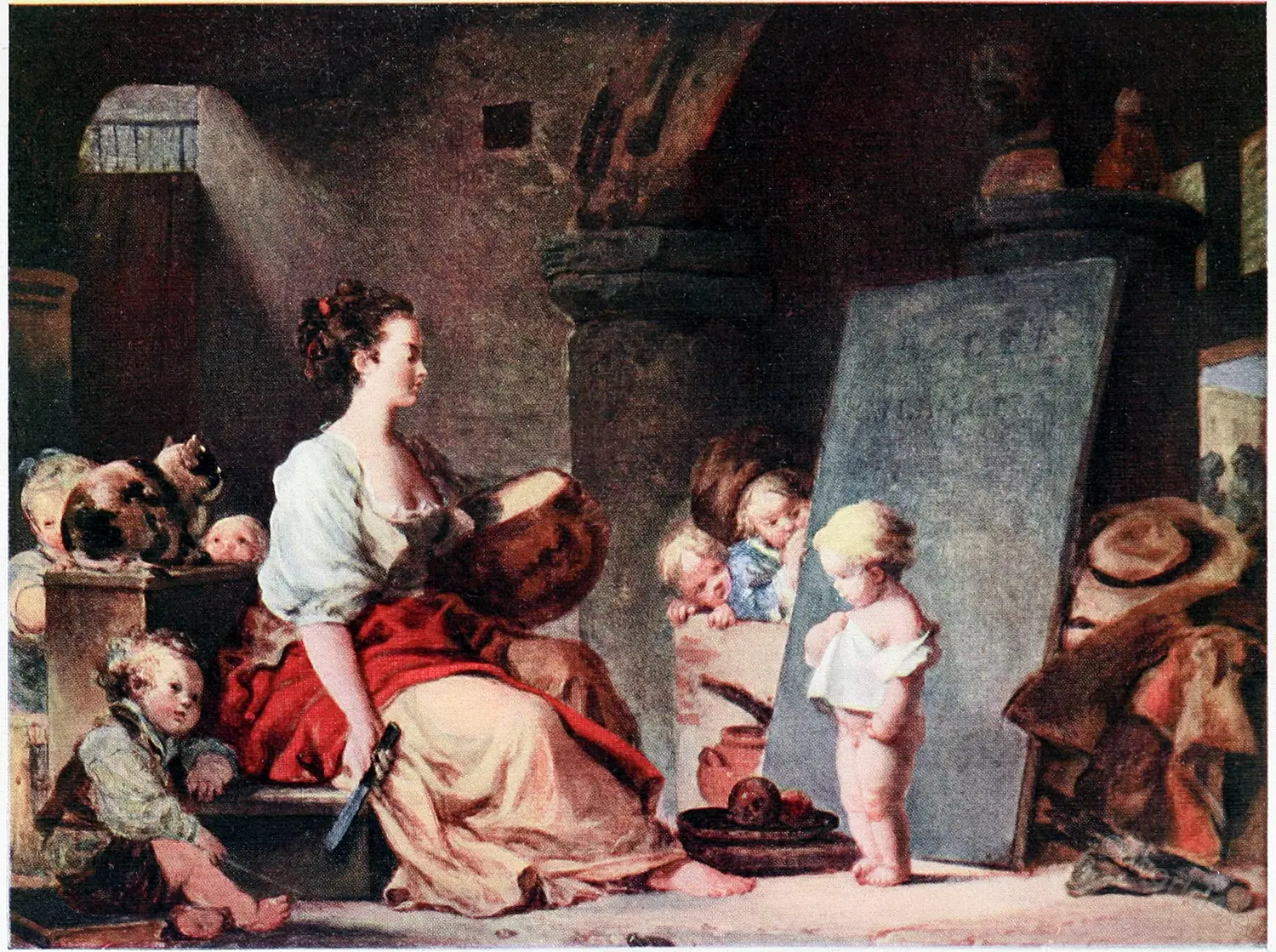L’ÉTUDE
3rd quarter of the 18th century (1750 – 1775)
Jean Honoré Fragonard (1732–1806)
(In the Louvre)
L’Étude, dit aussi parfois Le Chant.
The picture of a young woman sometimes known as “L’Étude” (but perhaps better known as “La Chanteuse” or “Song”) at the Louvre is another of those little canvases painted by Fragonard under the strong influence of the Dutch school, as we may see not only in the handling of the paint, and in the arrangement of the figure, but in the very ruffle about the girl’s neck, the lace cuffs to the sleeves, and the treatment of the dress.
(Jean-Honoré Fragonard: Madame Brillon de Jouy (1744-1824) – Anne-Louise née Boyvin d’Hardancourt married Brillon de Jouy. A renowned harpsichordist and composer, she leafed through a music book in front of a double manual harpsichord. The painting, called “The Study” before the subject was identified in 2011, had been considered an “allegory of music” or one of Fragonard’s “figures of fantasy”, portraits of friends and clients. The first owner of the work was probably the Lyonnais Randon de Boisset. Bequest from Dr Louis La Caze, 1869.)
Source: Fragonard by Haldane Macfall (1860-1928). Publisher London: T. C. & E. C. Jack; New York: F. A. Stokes, 1909.




